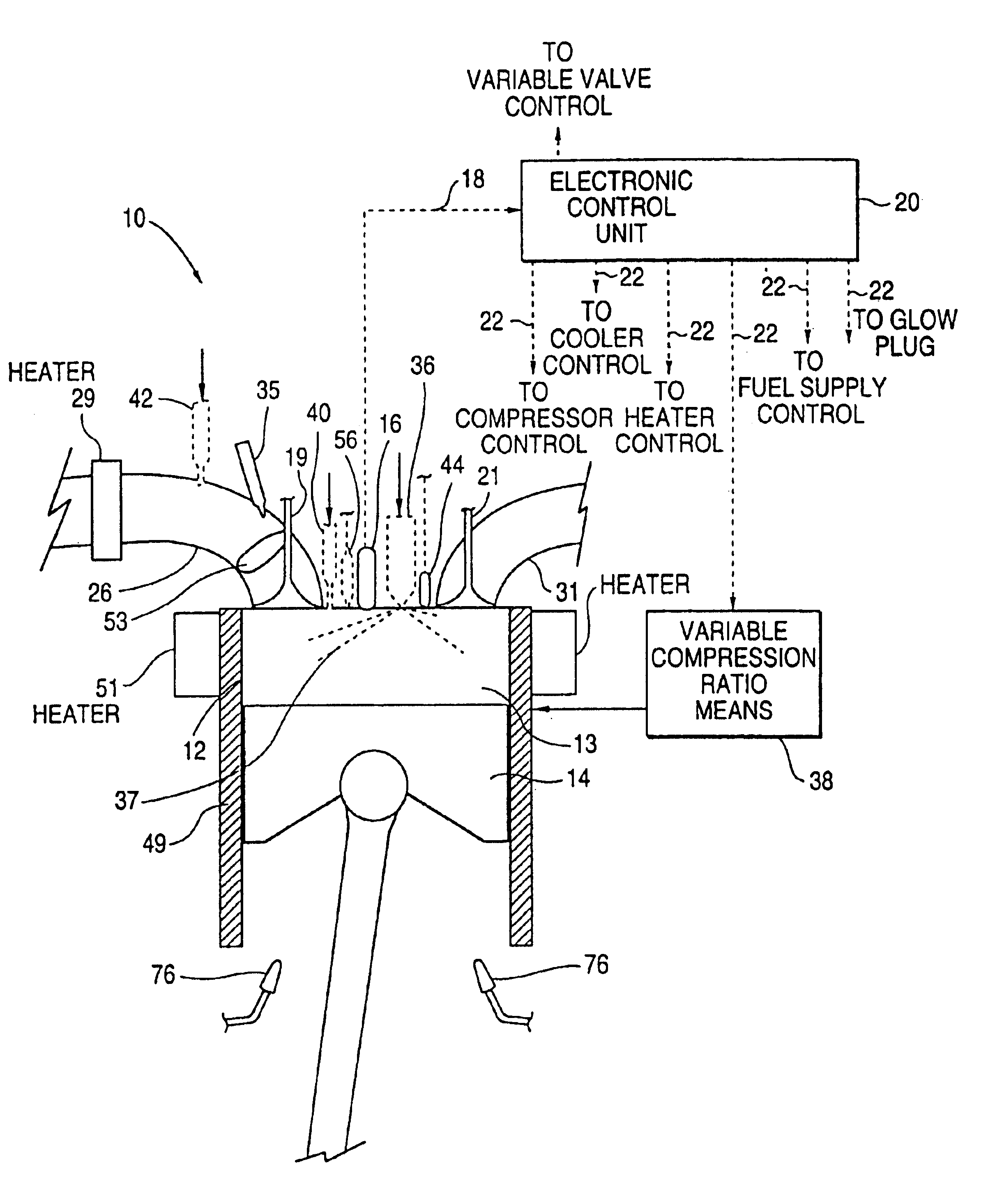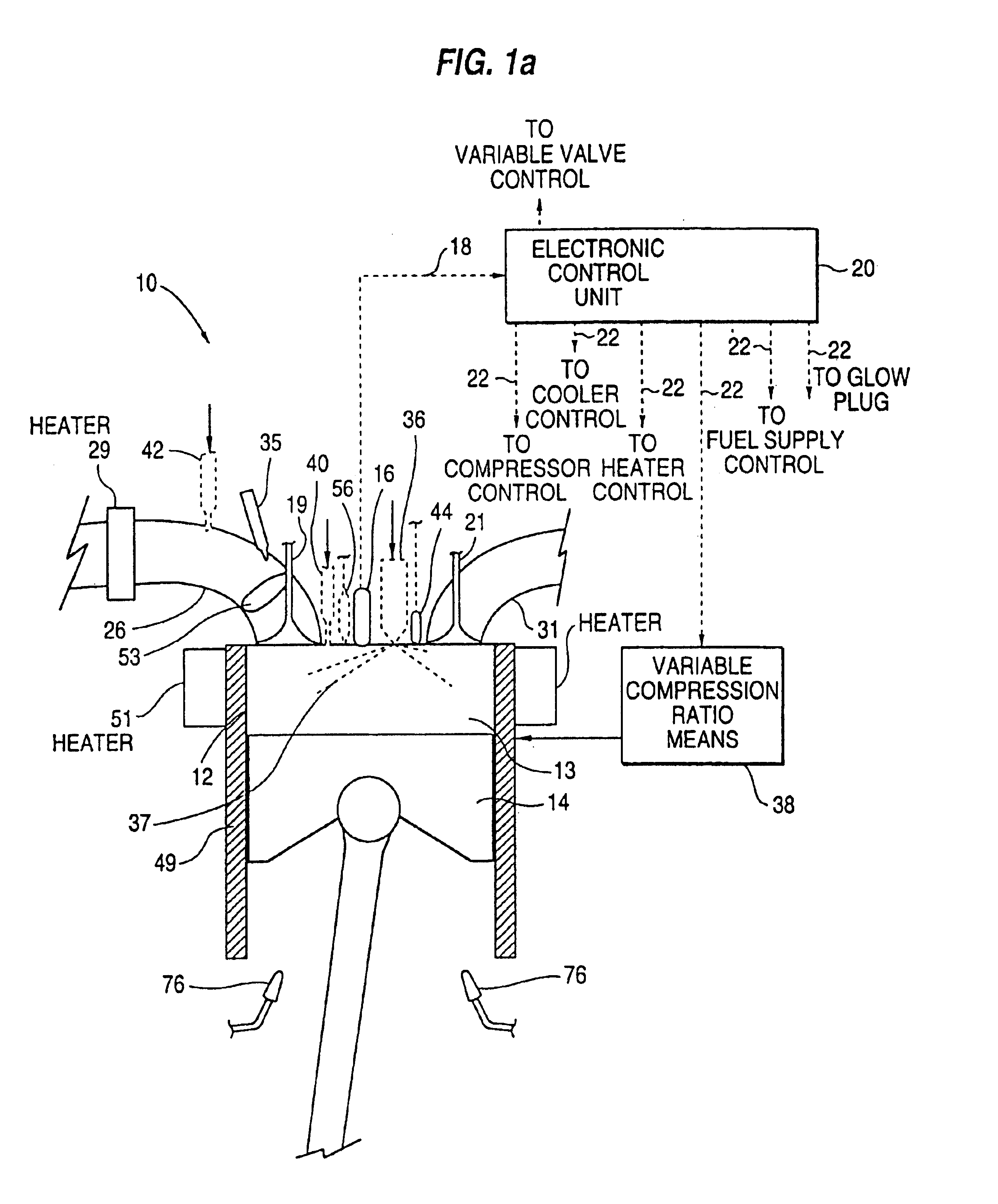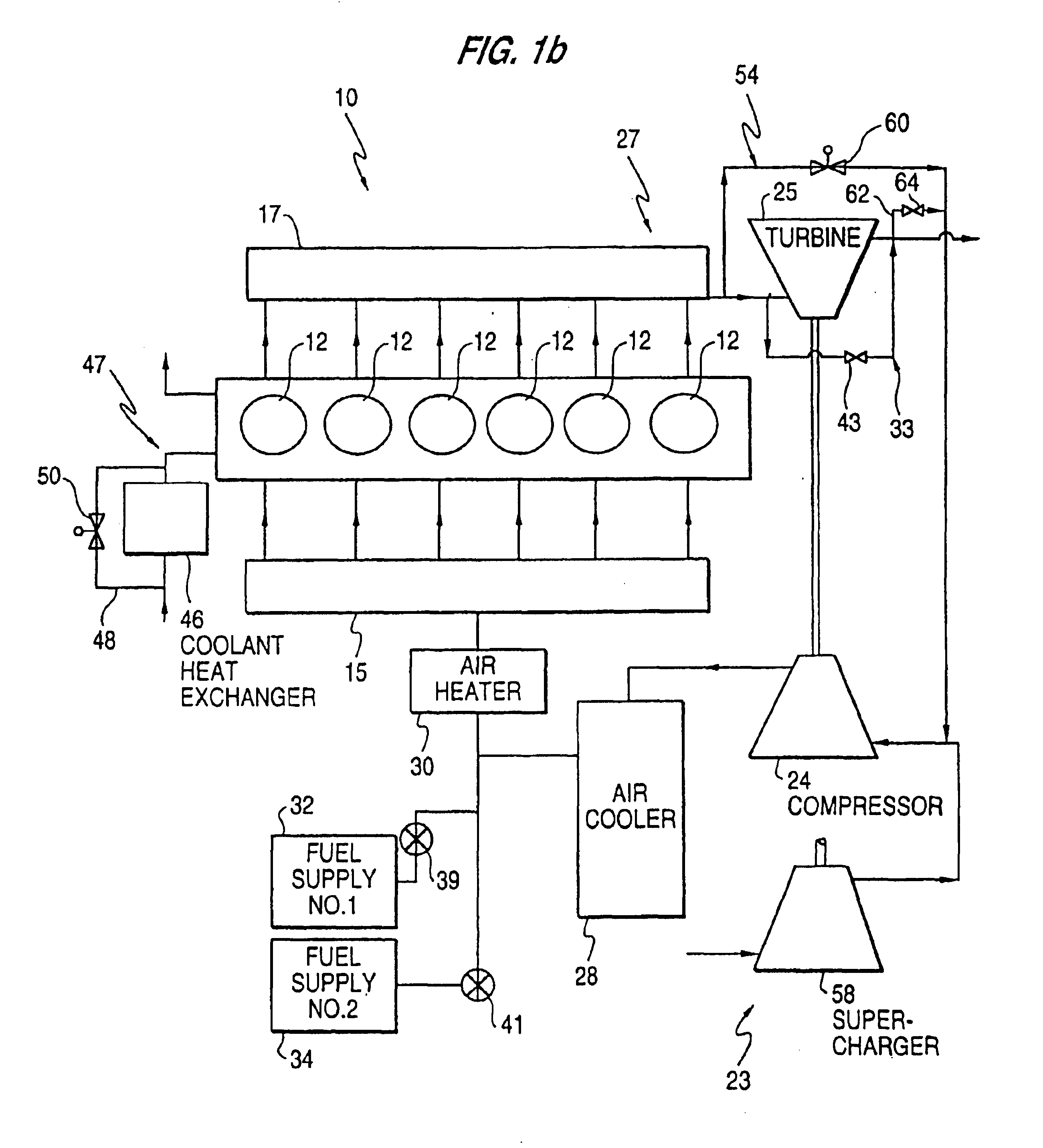Premixed charge compression ignition engine with optimal combustion control
a compression ignition and combustion control technology, applied in the direction of electric control, combustion-air/fuel-air treatment, machines/engines, etc., can solve the problems of increasing the challenge to contemporary designers, difficulty in overstating the importance of pcci engine or the engineering effort expended in seeking its perfection, and increasing the cost. , to achieve the effect of effective and efficient operation of pcci engin
- Summary
- Abstract
- Description
- Claims
- Application Information
AI Technical Summary
Benefits of technology
Problems solved by technology
Method used
Image
Examples
Embodiment Construction
[0115]The present invention is directed to an improved premixed charge compression ignition (PCCI) engine and control scheme for controlling the engine in a manner to optimally minimize emissions while maximizing efficiency. For the purposes of this application, PCCI refers to any engine or combustion process in which: 1) the vast majority of the fuel is sufficiently premixed with the air to form a combustible mixture throughout the charge by the time of ignition and throughout combustion; and 2) combustion is initiated by compression ignition. PCCI also refers to any compression ignition engine or combustion process in which the fuel and air are premixed long before ignition. As a result, the timing of injection of the fuel in the PCCI engine does not affect the timing of ignition of the fuel / air mixture. Also, it should be understood that PCCI is meant to encompass homogeneous charge compression ignition (HCCI) engines and processes wherein the mixture exists in a homogeneous, or ...
PUM
 Login to View More
Login to View More Abstract
Description
Claims
Application Information
 Login to View More
Login to View More - R&D
- Intellectual Property
- Life Sciences
- Materials
- Tech Scout
- Unparalleled Data Quality
- Higher Quality Content
- 60% Fewer Hallucinations
Browse by: Latest US Patents, China's latest patents, Technical Efficacy Thesaurus, Application Domain, Technology Topic, Popular Technical Reports.
© 2025 PatSnap. All rights reserved.Legal|Privacy policy|Modern Slavery Act Transparency Statement|Sitemap|About US| Contact US: help@patsnap.com



